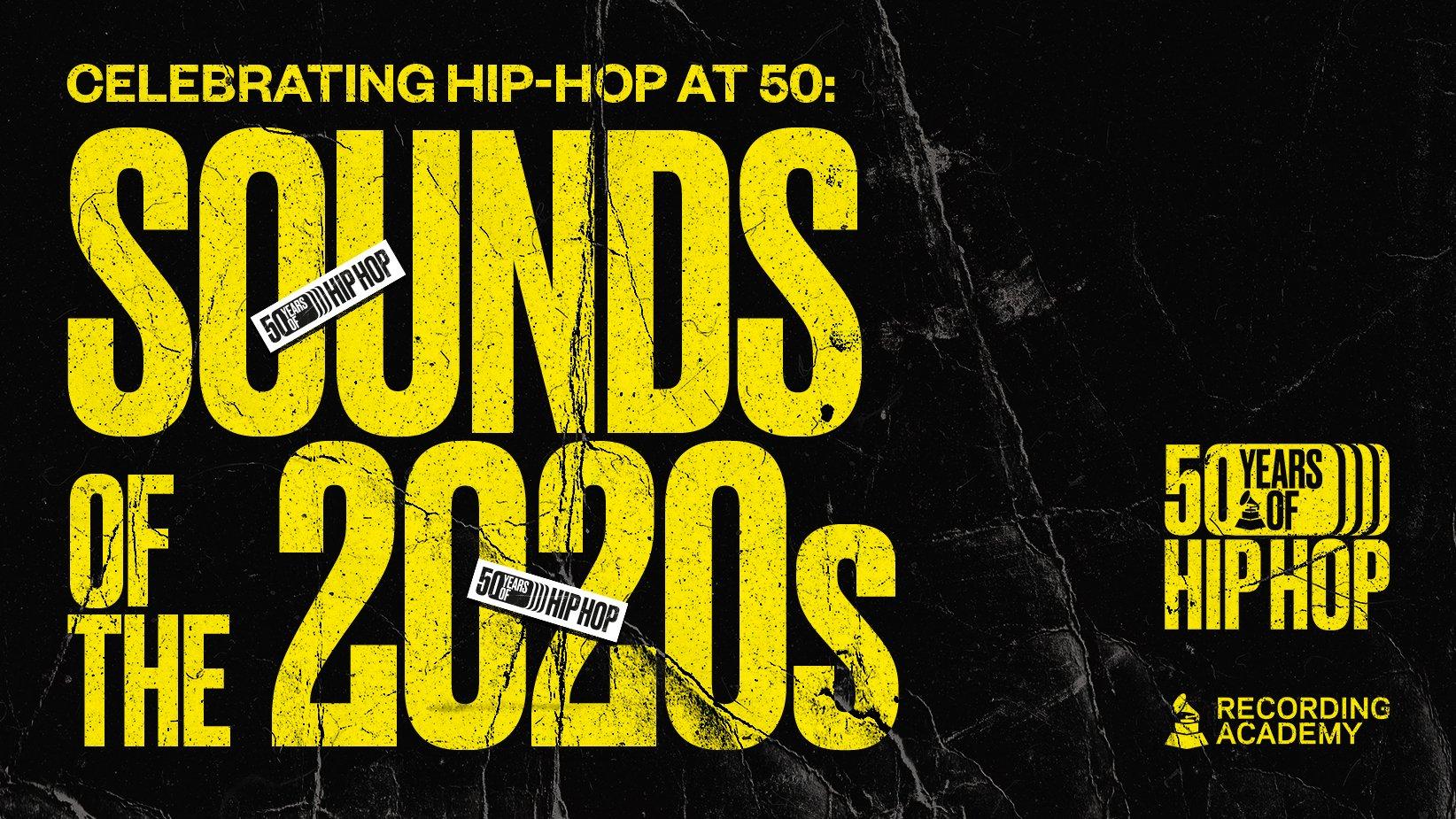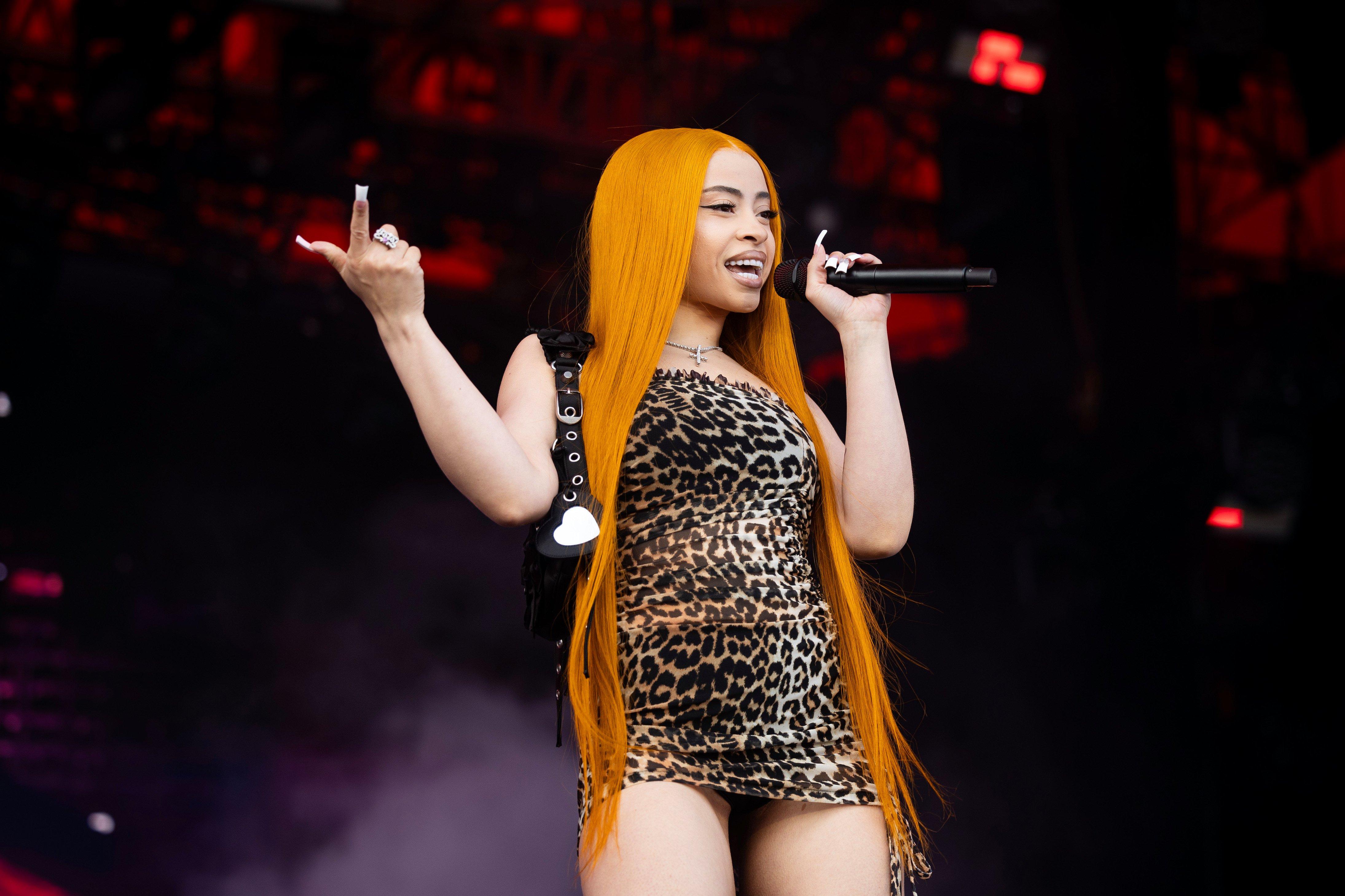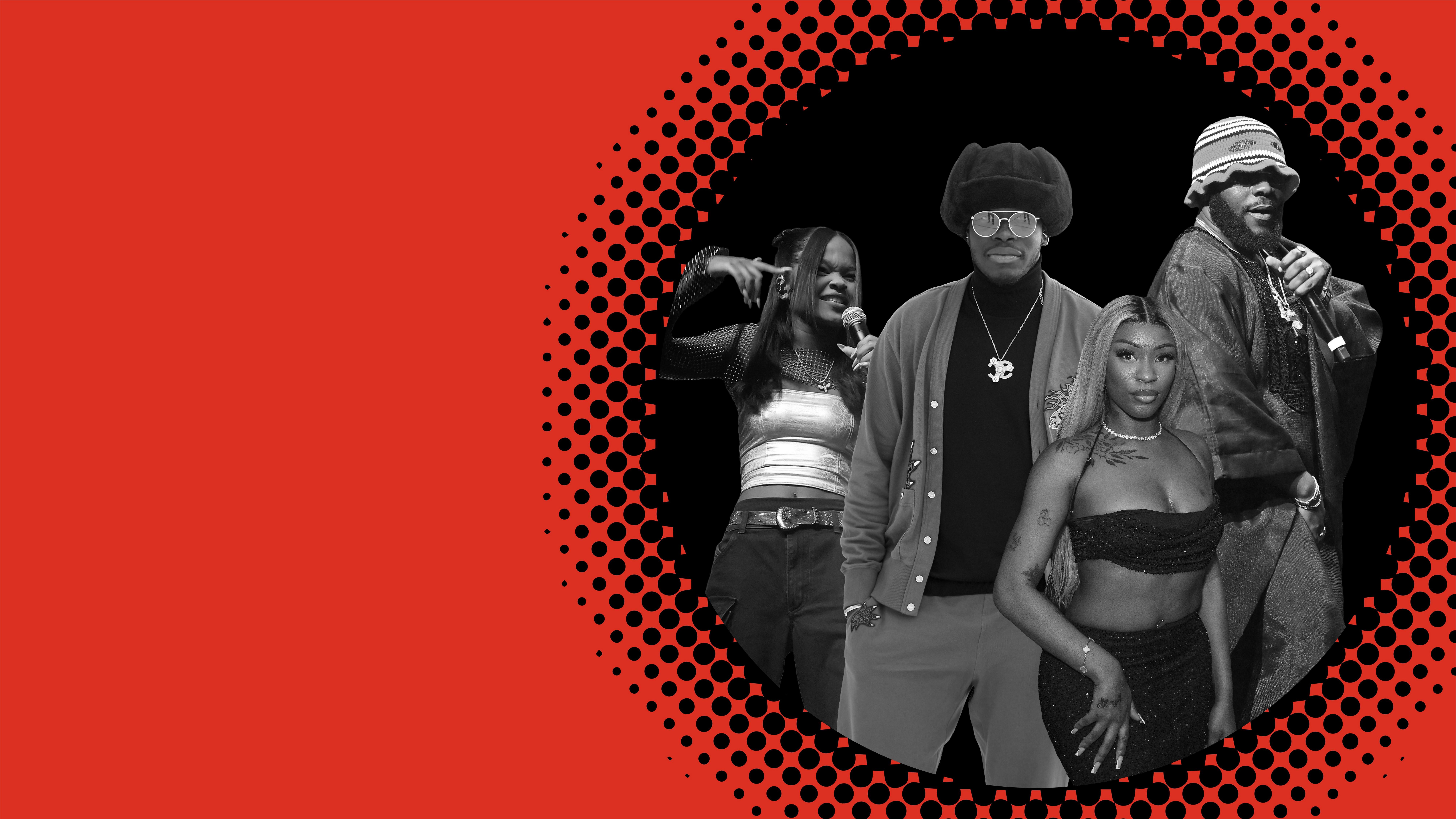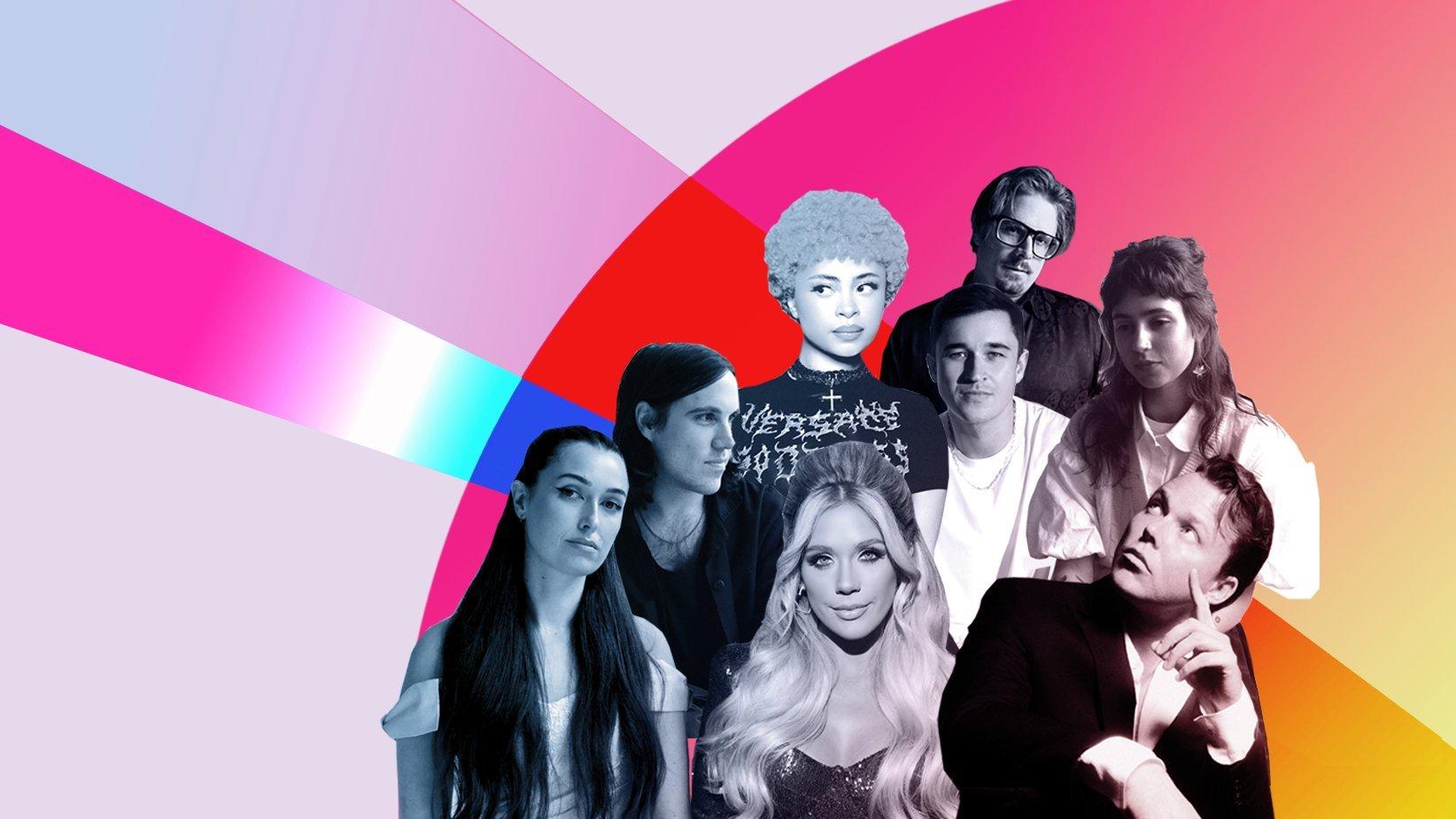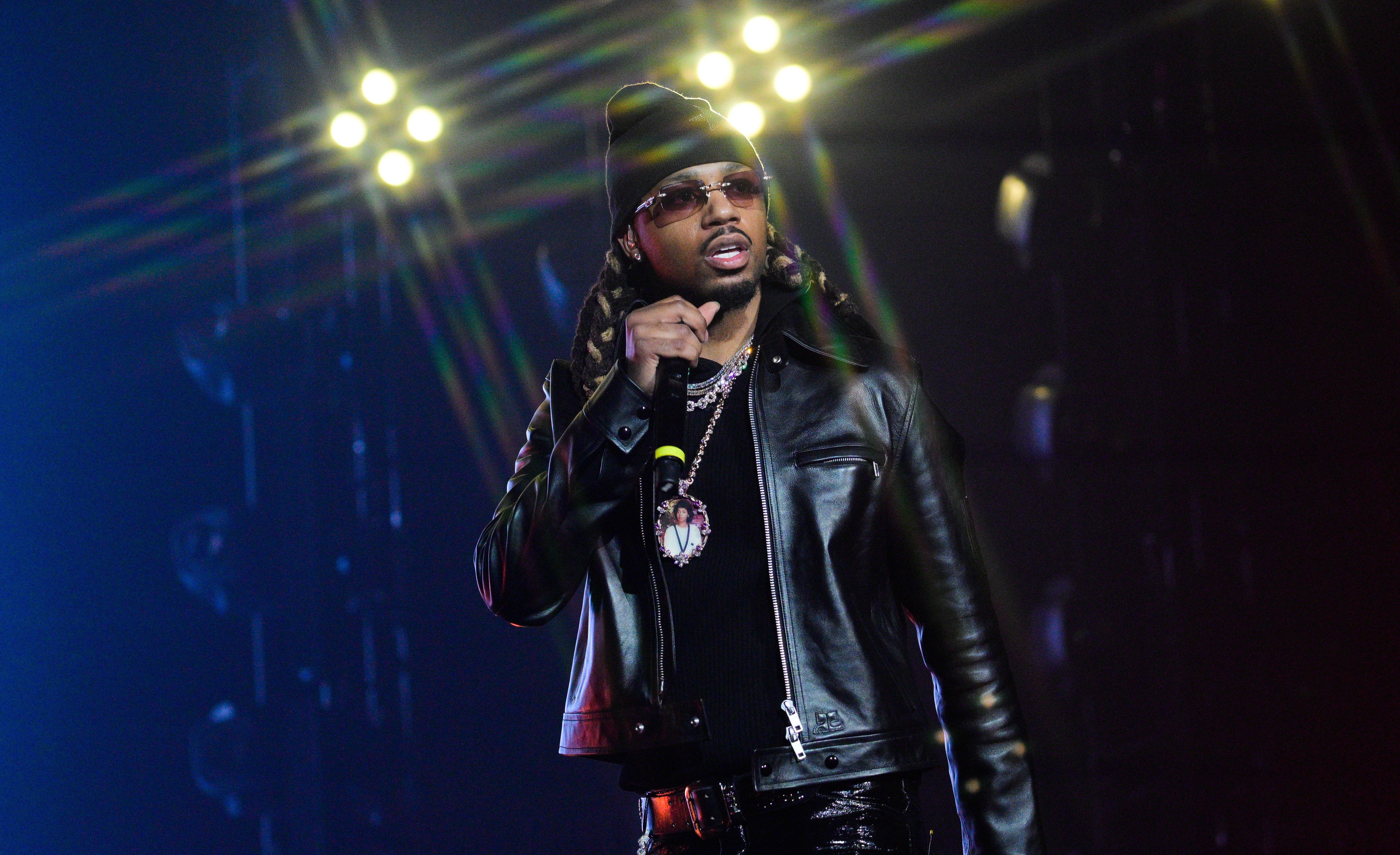With the arrival of July, half of 2024 is already behind us. It's been a remarkable, prolific year in music, with notables like Beyoncé, Taylor Swift, and even Paul McCartney's band, Wings, making brand new comebacks. The artists releasing albums in the coming months will have to strive to keep up the pace — but judging by July's upcoming blossoms, this won't be an issue.
The month will start strong with Megan Moroney's sophomore LP, Am I Okay?, Sturgill Simpson (now Johnny Blue Skies)'s Passage du Desir, OneRepublic's Artificial Paradise, and John Summit's debut, Comfort in Chaos. Later on, 5SOS's drummer Ashton Irwin will bring forth the second part of his sophomore solo, Blood on the Drums, alt-R&B star BLK ODYSSY will unveil the concept album 1-800-FANTASY, and rock legends Deep Purple will come forward with their twenty-third LP, =1. Alt-pop duo Cults will return with their fifth album, To The Ghosts, and 2023's revelation Ice Spice will also drop her long-awaited debut, Y2K!.
Below, GRAMMY.com crafted an exciting list with 15 unmissable albums coming out July 2024.
HARDY — 'Quit!!' (July 12)
Almost a decade ago, country rockstar HARDY found a napkin with the word "quit" in his tip jar. In 2024, the napkin became history as the Philadelphia singer named his upcoming record after it. "Thank you for inspiring me to be great. I guess sometimes holding a grudge is a good thing," wrote HARDY on social media.
Quit!! is HARDY's first LP fully embracing rock music, and follows 2023's the mockingbird & THE CROW. Comprising 13 tracks, the album features Red Hot Chili Peppers' drummer Chad Smith, Limp Bizkit's Fred Durst, and rising star Knox. HARDY also shared a slew of singles ahead, including "Six Feet Under (Caleigh's Song)" and "Psycho."
The genre-bending artist has just headlined CMA Fest in Nashville, Tennessee, and is currently touring the U.S. throughout the summer.
Cassadee Pope — 'Hereditary' (July 12)
More than 10 years after winning "The Voice Season 3," Cassadee Pope has journeyed plenty of roads — from pop punk to country, and now back again. Her upcoming studio album, Hereditary, is due July 12 and marks her first release after deciding to leave country music.
Pope said in a statement that Hereditary "offers a soundtrack to navigate the complexities of life with authenticity and courage." Her first full-length work since 2021's Thrive, the album is also "an emotional rollercoaster ride through the ups and downs of life, love, and self-discovery," where each track is imbued with history. The title Hereditary, according to the statement, "captures the essence of our roots, the echoes of our past, and the quest to carve our own path."
In preparation for the release, Pope shared singles "Eye Contact," "Three of Us," and "I Died" with Daisha McBride. The Hey Monday alum will also launch a North American tour with The Foxies and Natalia Taylar, starting July 11 in Anaheim, California.
Megan Moroney — 'Am I Okay?' (July 12)
Following the breakout success of her 2023 debut record, Lucky, professional emo cowgirl Megan Moroney will be back in just a few weeks with her sophomore effort, Am I Okay? According to a statement, the album provides "an up-close look at the life-changing pain of heartbreak and the glory of moving on."
Moroney is said to "light up" each of the LP's 14 tracks with her "signature balance of raw emotional honesty and warmhearted sensitivity." "I think after every song, [a] fair question would be, ‘Is she OK?' Whether it's good or bad," Moroney told ABC audio about the title of the project. "At the beginning, you're like, 'Am I OK?' And then, by the end, it's like, ‘Oh, I don't think she is.'"
The "Tennessee Orange" singer already shared four tracks from the album, including "No Caller ID," "Man on the Moon," "Indifferent," and "28th of June." Currently, Moroney is opening for Kenny Chesney's Sun Goes Down tour.
Sturgill Simpson (Johnny Blue Skies) — 'Passage du Desir' (July 12)
Sturgill Simpson will mark the beginning of a new era under the moniker Johnny Blue Skies, after fulfilling his promise to release only five studio albums under his own name with 2020's projects Cuttin' Grass Vol. 2. His first oeuvre is the LP Passage Du Desir, set to come out on July 12.
The album includes eight songs, all produced by Johnny Blue Skies and David Ferguson, and was recorded at both Clement House Recording Studio in Nashville and the iconic Abbey Road Studios in London. Passage Du Desir also marks his first project since 2021's The Ballad of Dood and Juanita.
Fans will be able to meet Johnny Blue Skies for the first time on a lengthy tour titled Why Not? this fall. Some of the stops include Nashville, Tennessee, Washington, D.C., Los Angeles, two nights in Toronto, and Boston.
OneRepublic — 'Artificial Paradise' (July 12)
OneRepublic's upcoming album, Artificial Paradise, was inspired by the digital paradigm that we live in now. "So many of these songs were written in the last couple years while we navigated a world full of artificial stories and constructs and paradise," shared frontman Ryan Tedder on Instagram. "All around the world and people's digitally broadcasted lives and the lives that we create for ourselves and the stories that we tell ourselves and others."
According to Tedder, the album comprises 15 tracks written over the last eight years "that didn't quite make sense together." Hence, previously released singles like "I Don't Wanna Wait" with David Guetta, "Nobody" off the anime series Kaiju No. 8, and "West Coast" are already well known by fans.
Artificial Paradise is the GRAMMY-nominated group's first release since 2021's Human, and precedes a three-day weekend of shows in Colorado Springs, CO, and a string of festival appearances including Summer Sonic Tokyo in Japan, Lollapalooza Berlin in Germany, and Rock in Rio in Brazil. "Amidst all of that artificiality, we are trying to find real connection and real love, and a real story," concludes Tedder.
John Summit — 'Comfort in Chaos' (July 12)
To put forward his debut album, Comfort in Chaos, dance music phenomenon John Summit had to dive deep into himself. "John Summit is the performing act, but when I write music I get more vulnerable," he shared in a statement. "While writing this album, I had to go from being in the mindset of John Summit to being John Schuster, my real name."
Comfort in Chaos arrives after a run of hit singles included in the tracklist, namely "Eat the Bass," "Go Back" with Sub Focus and Julia Church, and the Hayla-featuring duets "Where You Are" and "Shiver." Described as his "most introspective" and "emotional" work to date, Summit took the LP's 12 nifty tracks to expand his Chicago house foundations into genres like garage and drum & bass.
After stellar headline shows at Coachella and sold-out performances at Los Angeles' BMO Stadium and New York City's Madison Square Garden, 2024 is already a pivotal year for the Illinois-born sensation, and Comfort in Chaos arrives to consolidate his impact. As for summer and fall, Summit is booked for 26 shows and festival appearances scheduled around the world, with more to be announced.
Girl Ultra — 'blush' (July 12)
If you're in need of some early 2000s nostalgia, Mexican singer Girl Ultra — real name Mariana de Miguel — is coming out with her fourth EP, blush, on July 12. Inspired by R&B, club music, and trip hop sounds of the new millennium, the album comprises seven tracks that follow de Miguel's "need for experimentation" and lush artistry.
"I wanted short energetic tracks, and in lyrical terms, I was trying to find very precise messages about sadness, femininity and lust that inhabit these current times," she explained further in a statement. Singles "blu," "blush," and "rimel" exemplify that atmosphere, tackling beauty rituals with a touch of melancholy and yearning. Overall, blush is described as a plunge "into the complex dynamics of self-image and sexuality with a poignant touch of bitterness."
After opening for Julieta Venegas in her hometown of Mexico City and performing at Coachella this year, Girl Ultra is set to support Chromeo and The Midnight on a U.S. tour this fall.
Clairo — 'Charm' (July 12)
As the popular saying goes, "third time is the charm" — and so singer/songwriter Clairo (a.k.a Claire Cottrill) decided the title of her third studio album. Charm will arrive on July 12, and was produced by Clairo and Leon Michels of El Michels Affair.
With the announcement, Clairo shared the delicate single "Sexy to Someone," as well as a tracklist with 11 songs. Like her previous LP, 2021's Sling, Charm was recorded in New York's Diamond Mine Recording and Allaire Studios, but this time she tracked it live-to-tape.
In September, Clairo will kickstart separate five-day residencies in both Los Angeles and New York. Further concert dates are expected.
Orquesta Akokán — 'Caracoles' (July 12)
Since 2018, Orquesta Akokán have brought mambo to the spotlight, honoring its roots and infusing it with fresh twists. "Akokán" is a Cuban Yoruba word meaning "from the heart," and such is the thread underlining all of their work. Following their 2018's eponymous debut and 2021's 16 Rayos, the Cuban music enthusiasts are now ready to put forward Caracoles, out July 12.
For their third LP, producer Jacob Plasse and composer Michael Eckroth combined talents with renowned Cuban singer/songwriter Kiko Ruiz. The result is a danceable, uplifting record that fuses classic and modern traditions. According to a press release, "yes, it's mambo, with its prototypical instrumentation and structures, but these songs belong one hundred percent to 2024." As Ruiz said, Caracoles can "...vibrate your soul, which is precisely what the world needs right now."
Ashton Irwin — 'Blood On The Drums (The Roses)' (July 17)
"I love to make full length albums, but also the idea of the listener digesting it in two parts initially, forming their own interpretation," said Ashton Irwin, drummer of pop-rock band 5 Seconds of Summer (5SOS), in a press release about his sophomore solo album. "It's important to me, as a fan of music, to have a comprehensive body of work to fully dig into the artist's perspective."
Following 2020's Superbloom, Blood On The Drums is divided in two installments: Side 1, dubbed The Thorns, came out on June 12, and Side 2, The Roses, is set for release on July 17. Totaling 16 tracks, the LP blends 80s-inspired melodies with classic rock, experimental pop, and more, as it traverses Irwin's highs and lows. "I was thinking about the people I left behind, the people I miss, the family that I had to leave when I was young," the Australian musician shared. "Thinking about the addictions I've been through. The way I evolved as a young man who never had a father."
The title of the album is intended to be "a metaphor for how much I've given my music," said Irwin. To celebrate the release, he will play a single show at Los Angeles' The Belasco on July 18.
Highly Suspect — 'As Above, So Below' (July 19)
The Massachusetts rockers of Highly Suspect are gearing up to release their fifth full-length album, As Above, So Below. Following 2022's The Midnight Demon Club, the band opted to tone down the electronic elements and embrace a more psychedelic, stoner rock sound, as can be heard on pre-release track "Summertime Voodoo."
"If my life is a book, then this album is the first chapter that truly addresses the central conflict," frontman Johnny Stevens said in a press statement. "The recognition of an ego, the problems it's caused — and the birth of its death. ‘As Above, So Below.' If I'm being real, I hit rock bottom again. After another close call with death, I feel wide awake. I don't know how the book ends yet, but I'm very engaged in the plot now. I'd rather it not end at all."
To celebrate, Highly Suspect will play the new album in its entirety in an intimate, seven-city U.S. Tour, kicking off on July 24 in Memphis, Tennessee and wrapping up on August 2 in Brooklyn.
Deep Purple — '=1' (July 19)
Few bands get to release 23 albums, and for that fact alone, Deep Purple deserve praise. It does help that they are rock legends in their own right, therefore, =1 comes as a sweet, inspiring surprise.
Paired with acclaimed producer Bob Ezrin once again, =1 sees the British band evoke their classic sound "without relying on nostalgia," according to a statement. They promise to bring "rip-roaring rock n' roll" in 13 energetic tracks, and a taste of what's to come can be seen in singles "Portable Door" and "Pictures of You." It is also the band's first album with guitarist Simon McBride, who joined the band after member Steve Morse left due to personal circumstances in 2022.
The title =1 symbolizes the idea that, in a complex world, everything eventually equals one. In that communal spirit, Deep Purple is set for an extensive tour, starting with European dates in July, North and South American shows in September, and back with more European dates throughout November.
BLK ODYSSY — '1-800-FANTASY' (July 19)
"The album is a concept album where we get into the world of Afro-surrealism with a high school kid who's madly in love with a popular girl, but she really has no idea he exists," explained BLK ODYSSY about his upcoming album, 1-800-FANTASY, in an interview with BET. "He understands that she's out of his league but he is dedicated to proving to her that he's worthy of her attention and her love."
1-800-FANTASY follows that story while dipping into themes of mental health and self-control. "He creates these characters in his head to justify his crazy actions that he goes through to get her attention," BLK said, adding that that's where the album's "angsty sound" comes from. So far, a preview of that atmosphere can be seen in singles "XXX" with Wiz Khalifa, and a live performance of "Phase" at A Colors Show.
Born Juwan Elcock in New Jersey, he cites Kendrick Lamar, D'Angelo, and Outkast as influences to his own brand of alt-R&B and hip hop. "Whether it's me as an artist, or me as a producer, it is a very cinematic sound," he shared. "And it's a very theatrical sound, I like to take elements from what the human perceives as real life and put it in my music."
BLK will promote the album in his The Fantasy House tour this summer, starting off in North America and following up with European dates.
Ice Spice — 'Y2K!' (July 26)
One of last year's biggest revelations, GRAMMY-nominated rapper Ice Spice will finally release her debut LP, Y2K!. Titled as a nod to her birthdate (1st January 2000), the long-awaited effort comes after 2023's acclaimed EP Like..?, and was co-produced by longtime collaborator RIOTUSA.
Ice Spice has been keeping the 10-song tracklist a mystery, though, and so far shared only three singles: "Think U The Shit (Fart)," "Gimmie A Light" (which samples Sean Paul's similarly titled "Gimme the Light"), and "Phat Butt." In an interview with "The Today Show", she also revealed to have locked in a "crazy collaboration," and to have experimented with "a lot of different sounding beats that I haven't really been heard on much."
Starting July, the Bronx native will be busy with a handful of performances at European Festivals, followed up by a 17-date North American tour in August.
CULTS — 'To The Ghosts' (July 26)
Madeline Follin and Brian Oblivion have been making soft alt-pop music as the duo Cults for over a decade now. July brings forth yet another of their magical offerings: fifth studio album To The Ghosts, out via IMPERIAL on July 26.
The first ideas for the album sprung up during the COVID-19 pandemic, "when they wrote music on weekdays from 10am-5pm with no deadlines or distractions," says a press release. To The Ghosts was recorded at Oblivion's apartment, and co-produced by trusted collaborator Shane Stoneback. The New York duo shared singles "Crybaby" and "Left My Keys" in advance. Of the latter, Oblivion stated that "With this being To the Ghosts, ‘Left My Keys' is dedicated to the ghost of your high school memories with an element of fondness."
Cults will kick off a headline North American tour in August, followed by a month-long stint as the opening act for Vampire Weekend's Only God Was Above Us tour.
Latest News & Exclusive Videos

